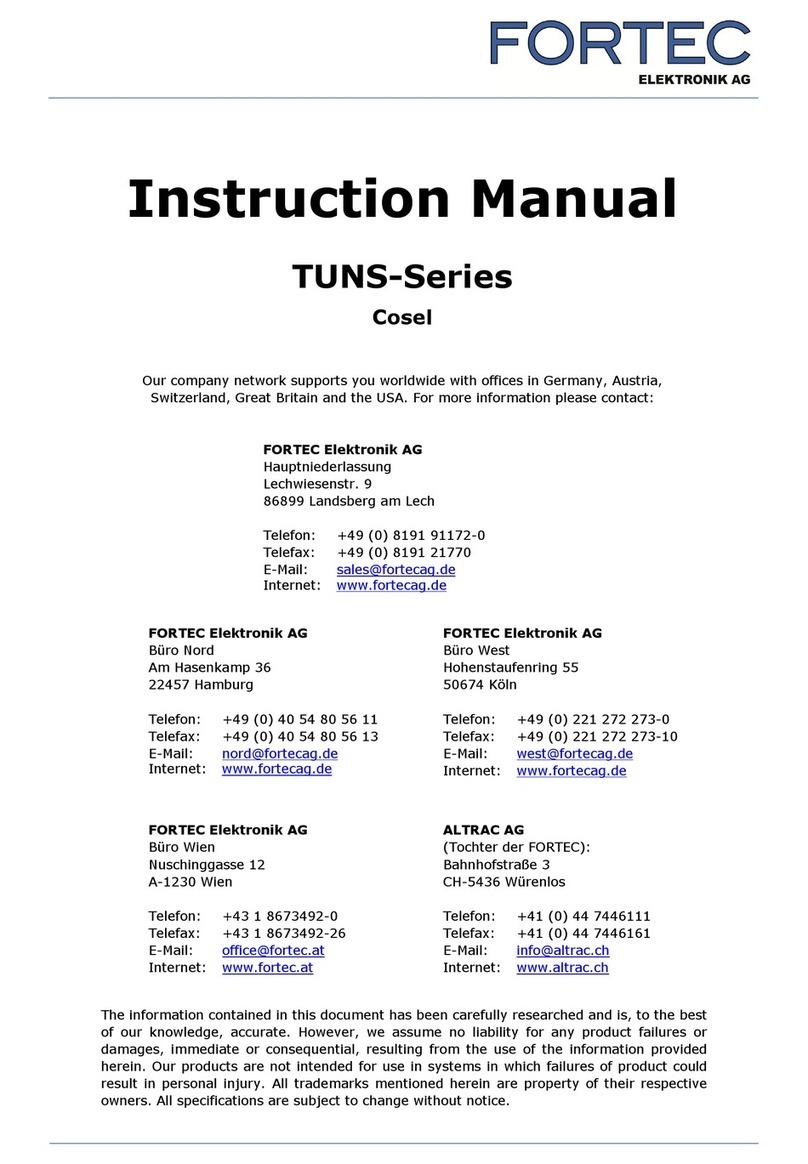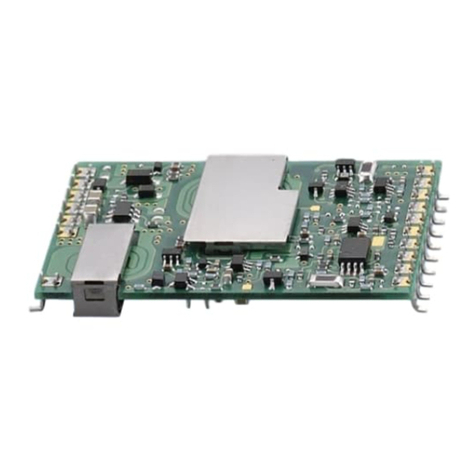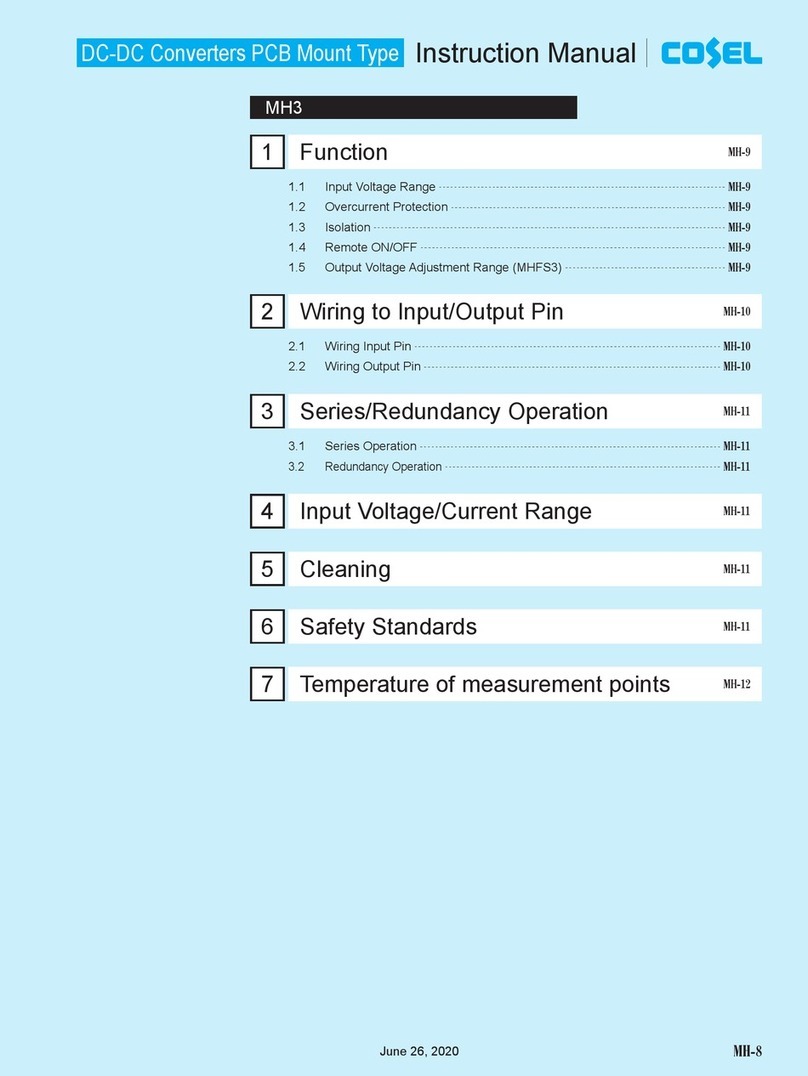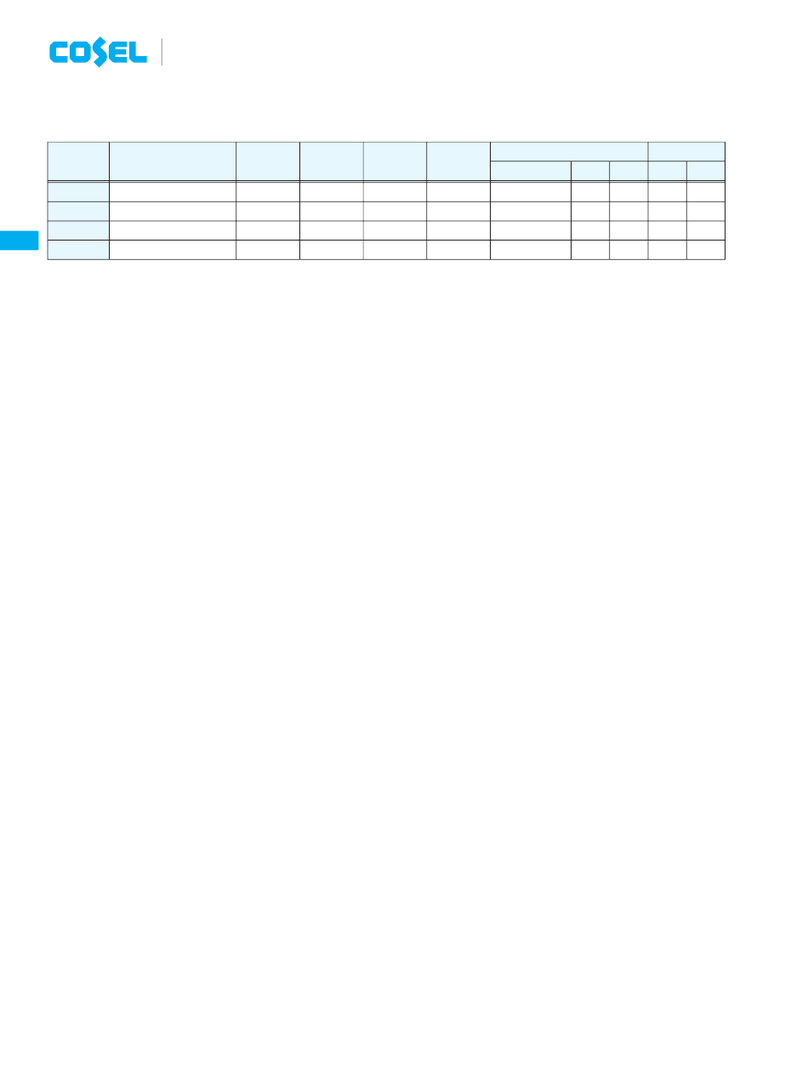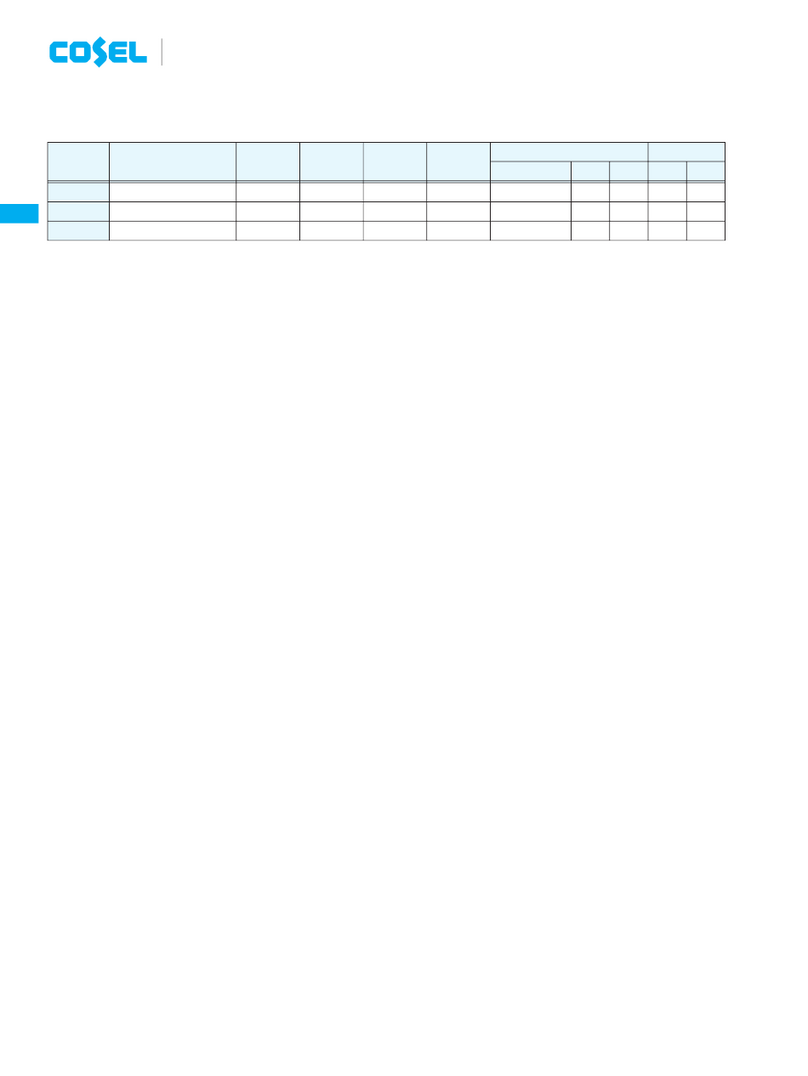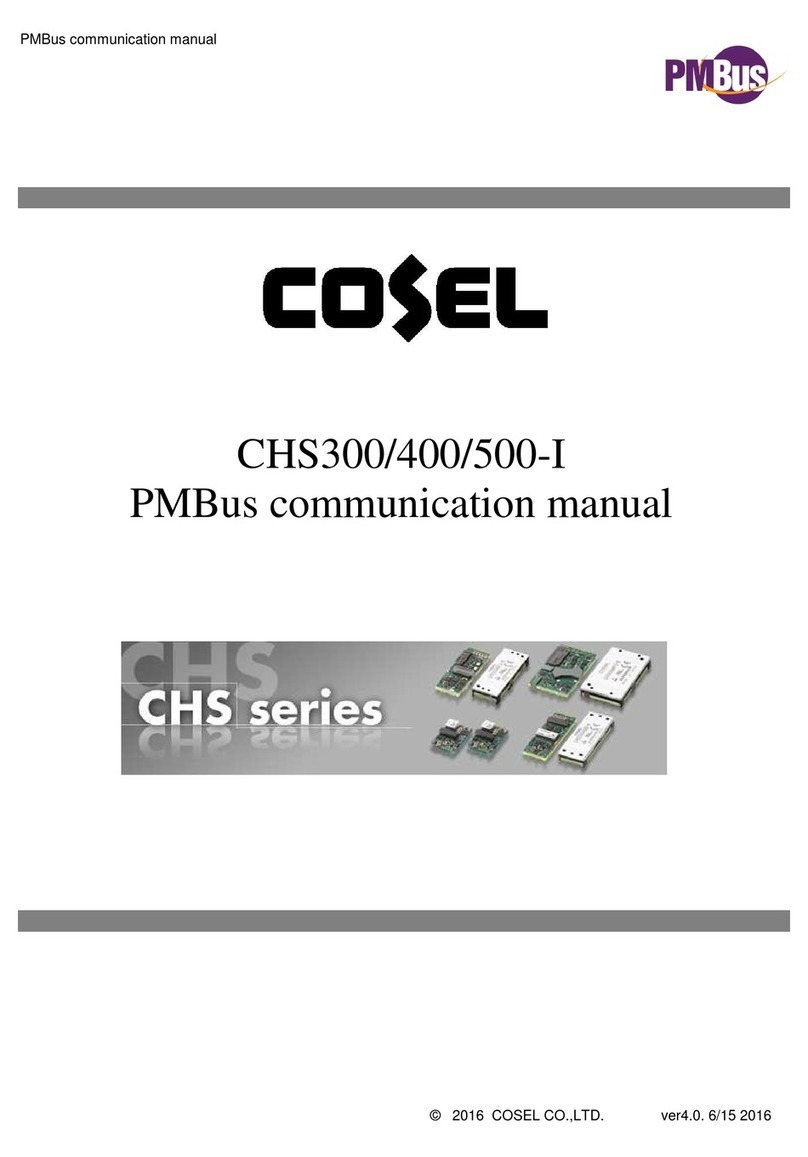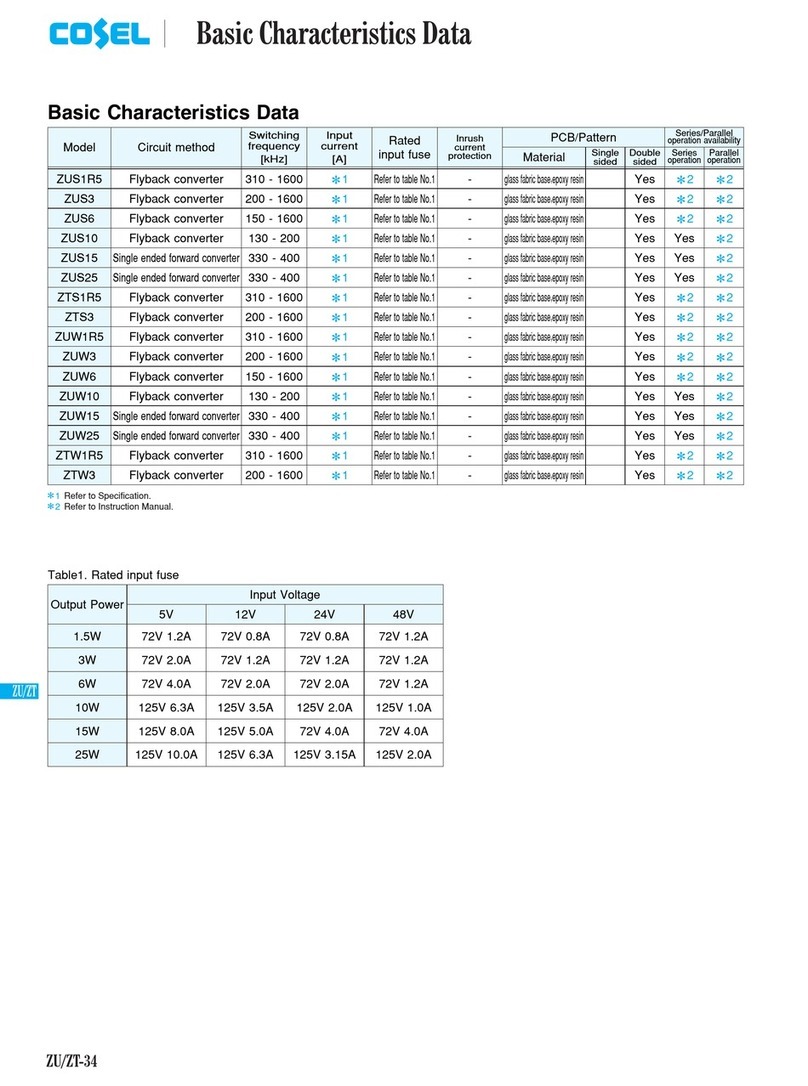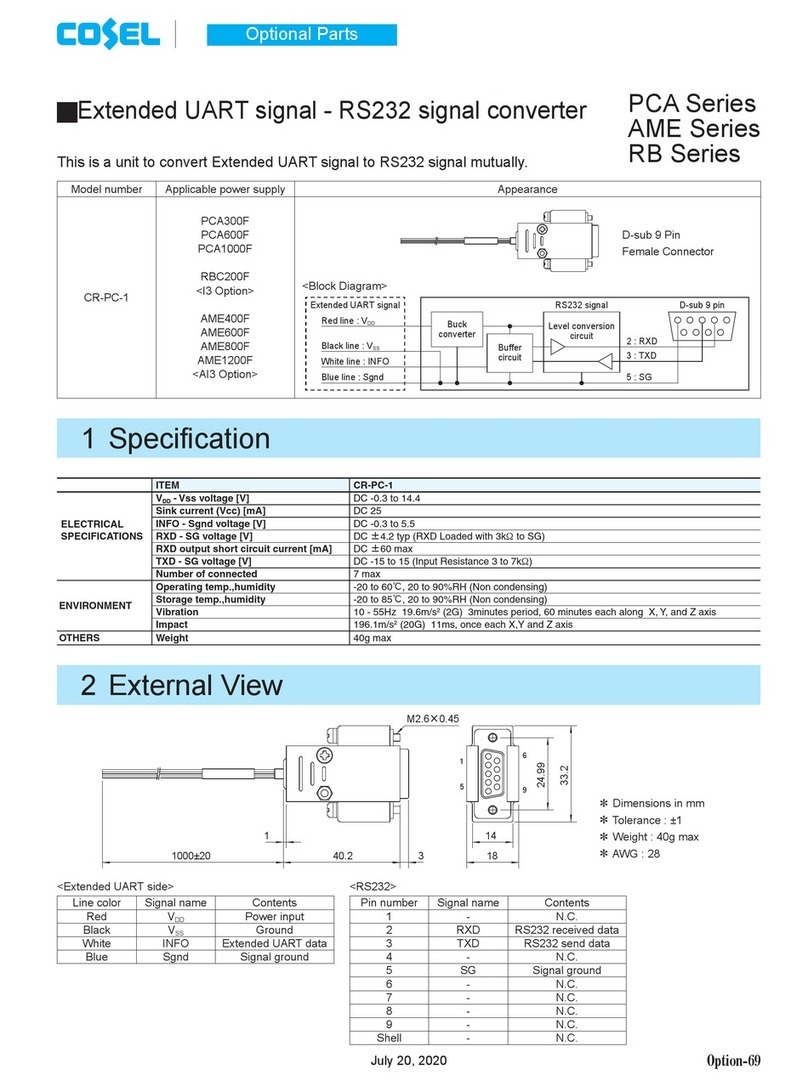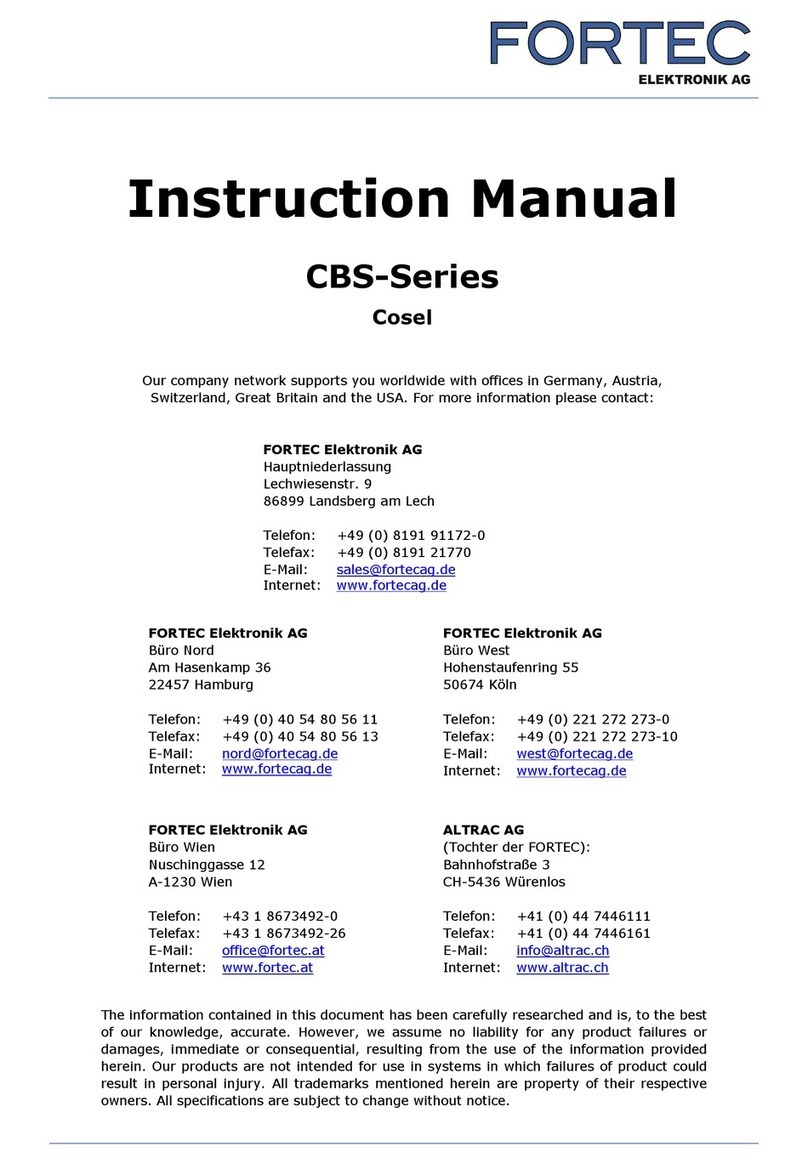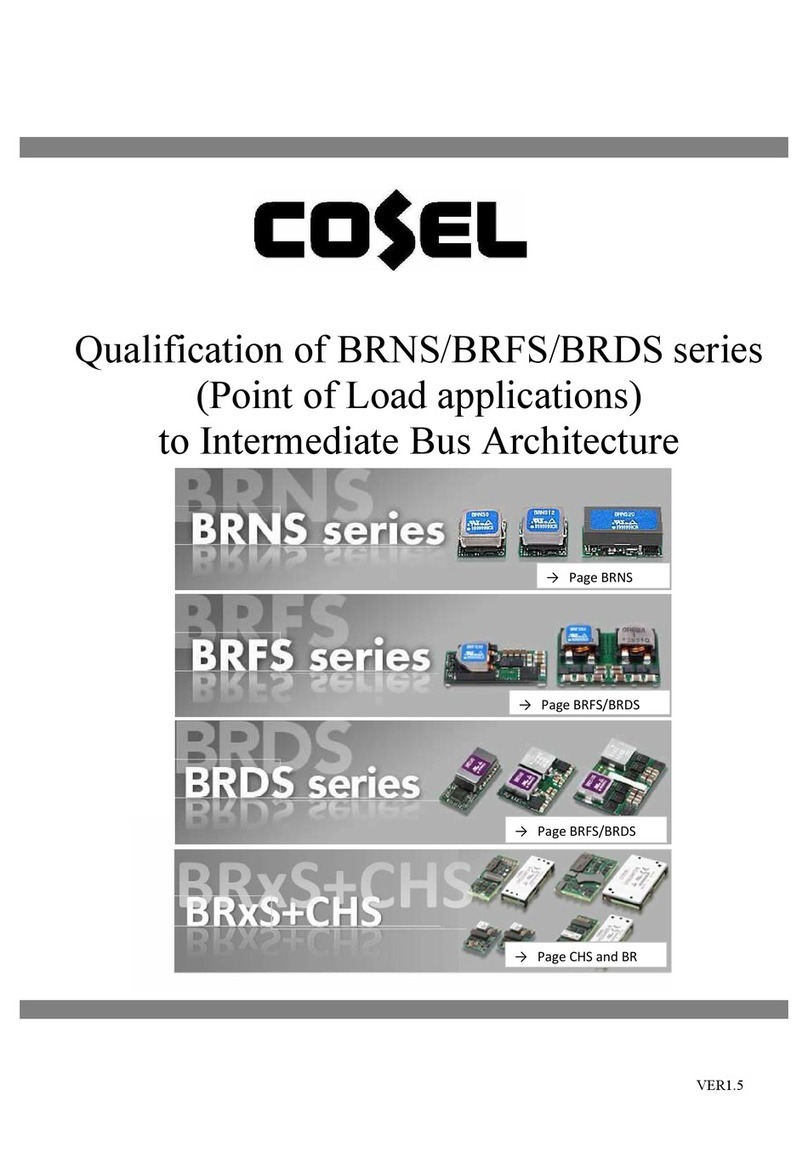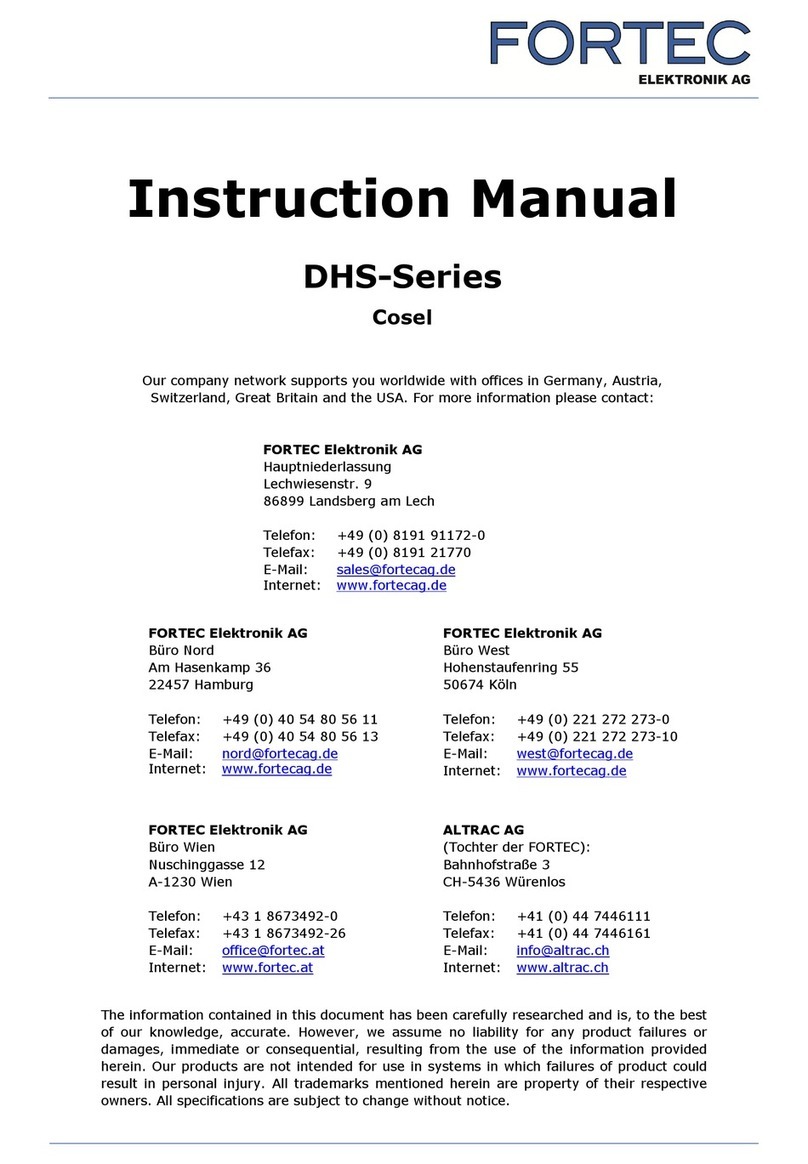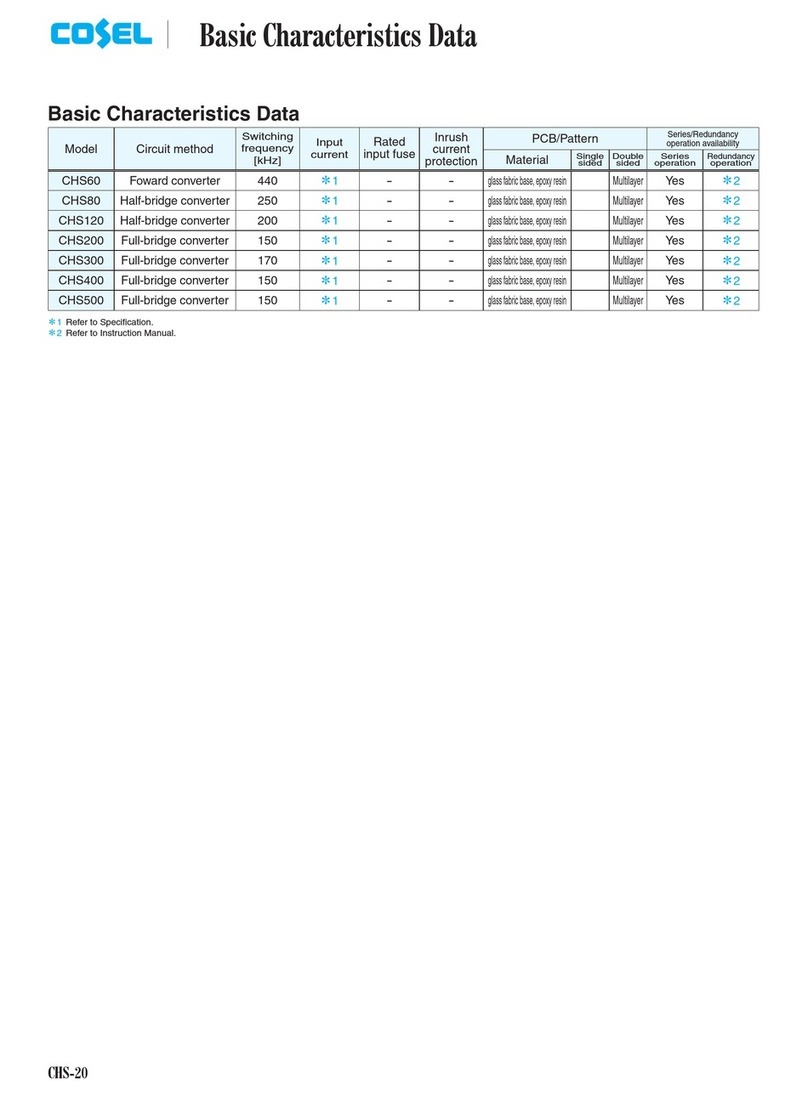
Table 3.1 Specication of TMP, IOG
No. Item TMP IOG
1 Function
Normal operation ”H”
Normal operation ”L”
Overheat detection ”L”
Malfunction of inverter ”H”
2 Base pin -S
3 Level voltage ”L” 0.5Vmax at 5mA
4 Level voltage ”H” 5V typ
5 Maximum sink current 10mA max
6
Maximum applicable voltage
35V max
3.5 Remote ON/OFF
¡Remote ON/OFF circuit is built-in on both side of input(RC1) and
output(RC2
-
RC3).
Output can be controlled by either circuit.
(1) Input side remote ON/OFF(RC1)
¡The ground pin of input side remote ON/OFF circuit is ”-VIN” pin.
Between RC1 and -VIN: Output voltage is ON at ”Low” level or
short circuit(0 - 1.0V).
Between RC1 and -VIN: Output voltage is OFF at ”High” level or
open circuit(3.5 - 7.0V).
When RC1 is ”Low” level, fan out current is 0.3mA typ. When Vcc
is applied, use 3.5 [Vcc [7V.
When remote ON/OFF function is not used, please short between
RC1 and -VIN.
¡When the DPF-DPG series(Power factor & harmonic correc-
tor module) is used as a front end unit, connect between RC1
pin and ENA pin on DPF-DPG for the start-up time of the
DBS200B/400B/700B control. Please contact us for details.
VIN
or
or
Rc
Fig.3.2 RC1 connection example
(2) Output side remote ON/OFF(RC2-RC3)
Table 3.2 Specication of output side remote ON/OFF(RC2-RC3)
No. Item RC2-RC3
1 Wiring method Fig.3.3 (a) Fig.3.3 (b) Fig.3.3 (c)
2 Function
Power ON ”H” Power ON ”H” Power ON ”L”
3 Base pin RC2 -S -S and RC2
4 Power ON Open
(0.1mA max)
Short
(0.5V max)
5 Power OFF Short
(3mA min)
Open
(0.1mA max)
¡When the output voltage drops at overcurrent, the average output
current is reduced by hiccup operation of power supply.
3.2 Overvoltage protection
¡The overvoltage protection circuit is built-in. The DC input should
be shut down if overvoltage protection is in operation. The mini-
mum interval of DC recycling for recovery is for 2 to 3 minutes().
The recovery time varies depending on input voltage and input
capacity.
Remarks:
Please note that devices inside the power supply might fail when
voltage more than rated output voltage is applied to output termi-
nal of the power supply. This could happen when the customer
tests the overvoltage performance of the unit.
3.3 Thermal detection/Thermal protection
¡Thermal detection(TMP) and protection circuit are built-in.
¡When overheat is detected, thermal detection signal(TMP) turns
”L” from ”H”.
TMP circuit is designed as shown in Fig.3.1, and specication is
shown as in Table 3.1.
¡When overheating continues after detecting the TMP signal, the
output will be shut down by the thermal protection circuit.
When this function comes into effect, input voltage should be shut
off, and eliminate all possible causes of overheat condition and
lower the temperature of the unit to the normal level.
3.4 Inverter operation monitor
¡By using the inverter operation monitor(IOG), malfunction of the
inverter can be monitored.
When inverter operation is in following mode 1or 2, IOG signal
turns ”H” from ”L” within 1 second.
IOG circuit is designed as shown in Fig.3.1 and specification is
shown in Table 3.1.
1Malfunction of inverter.
2The output voltage drops by 60% or less of the rated voltage.
3When output wattage is decreased radically to less than 10% of
rated wattage.
6V typ
22kW
or
IOG
-S
Fig.3.1 TMP, IOG circuit
DC-DC Converters Bus Converter
-
Power Module Type
Instruction Manual
DBS-15 June 26, 2020
